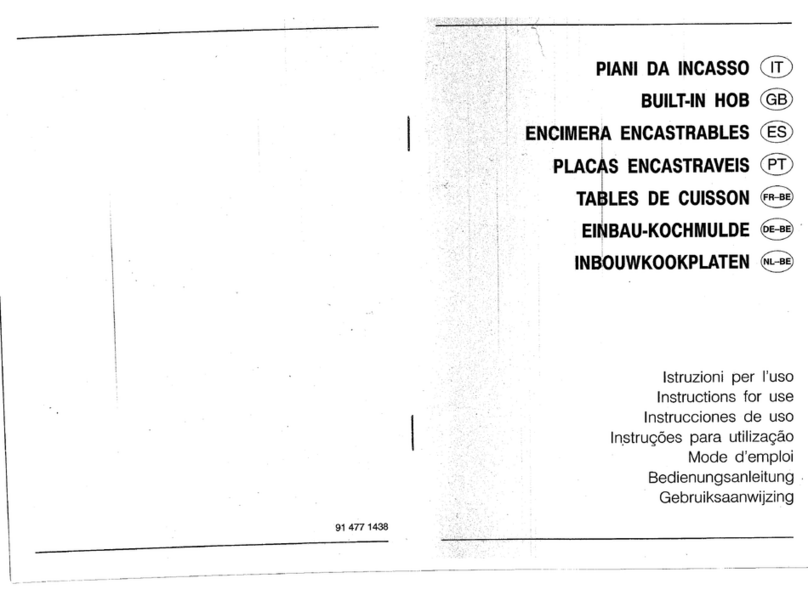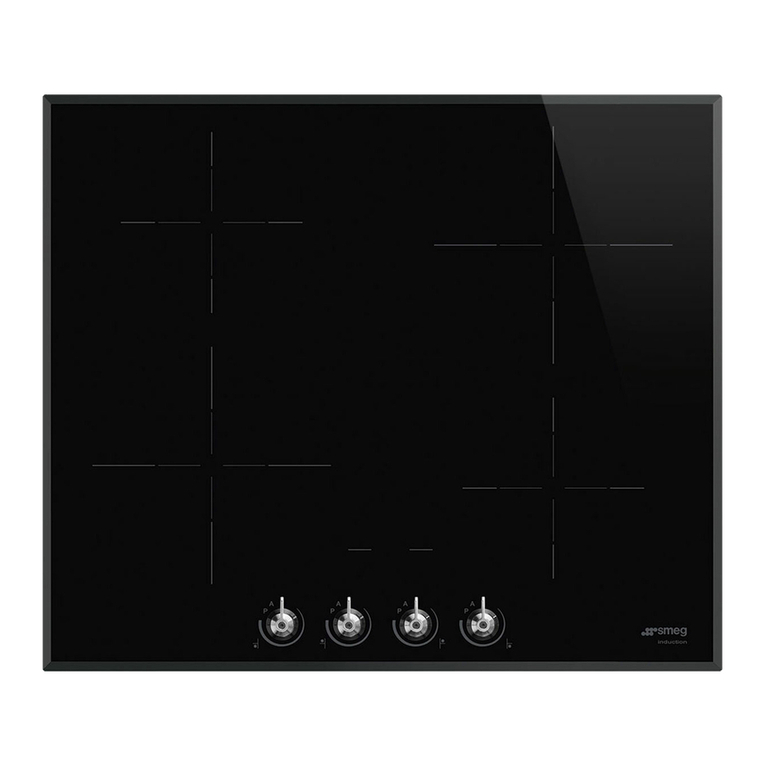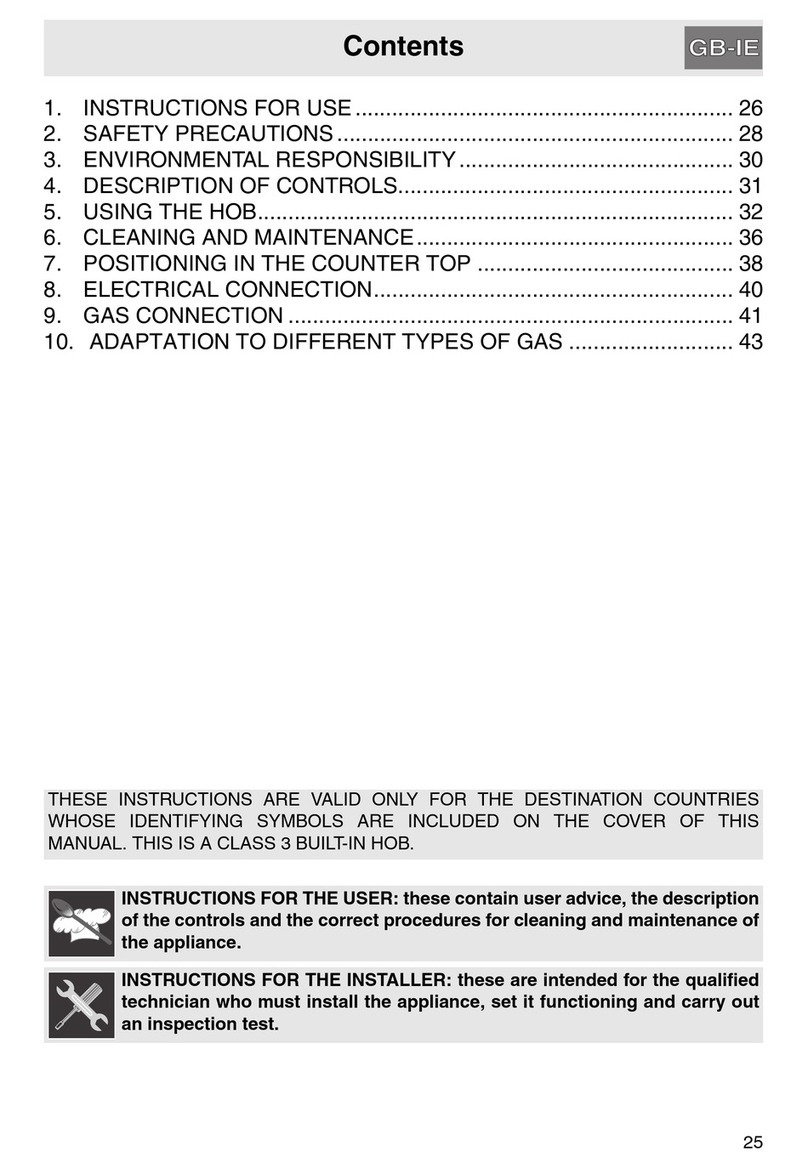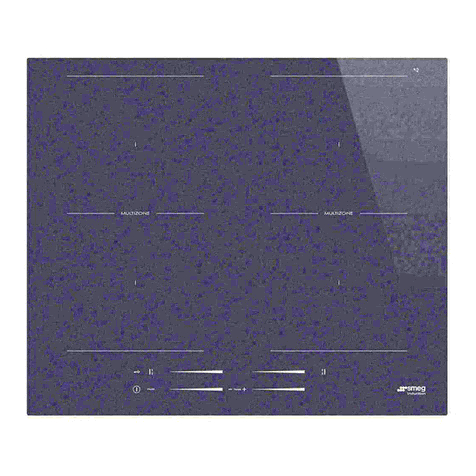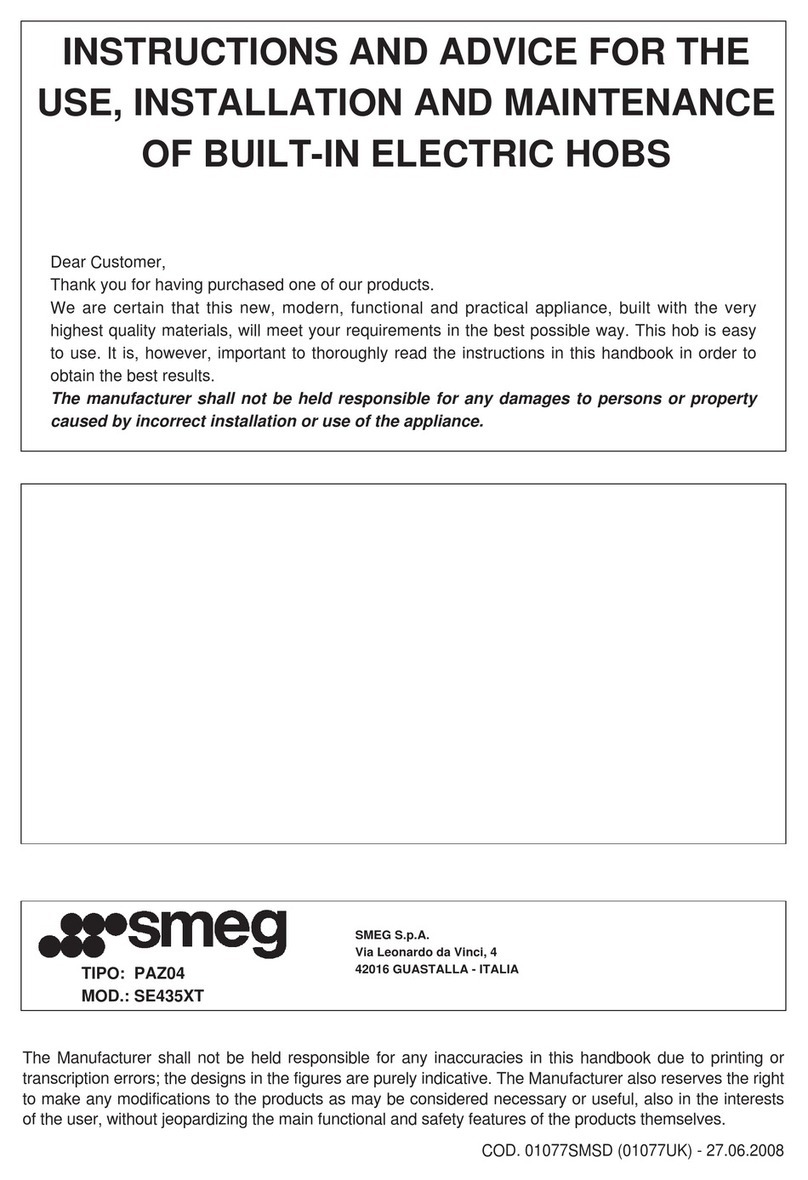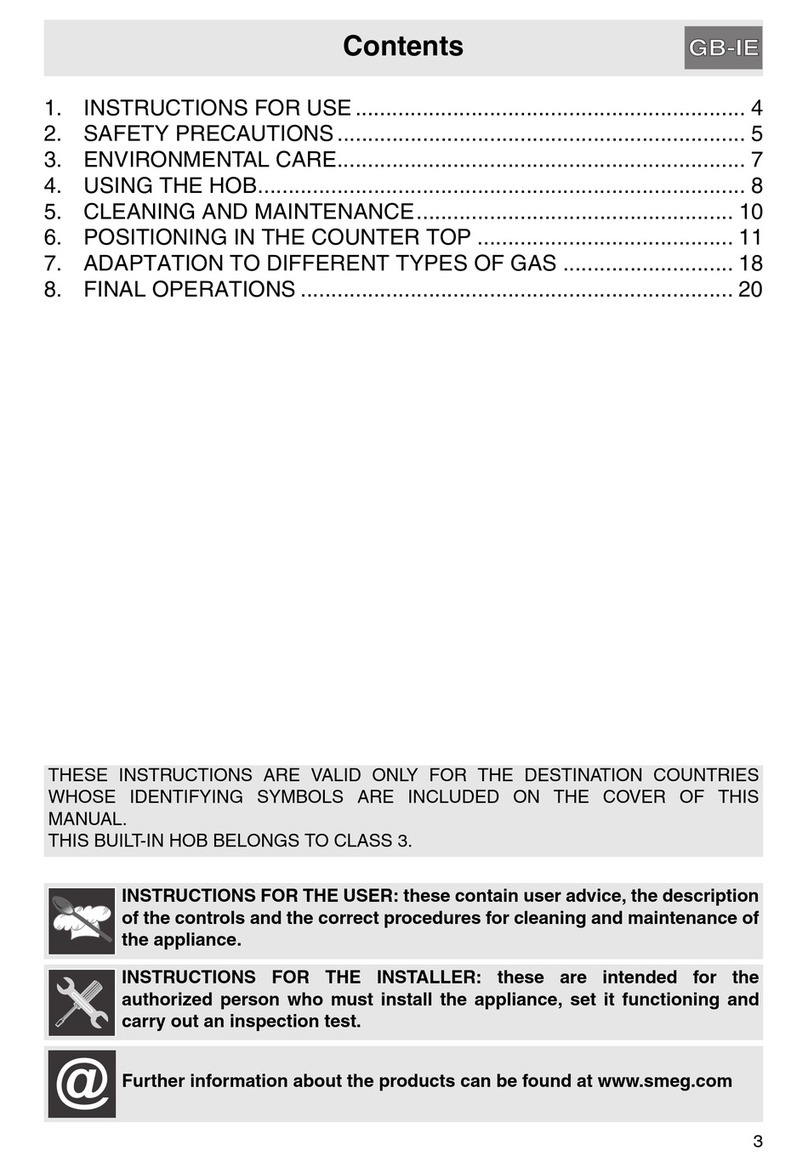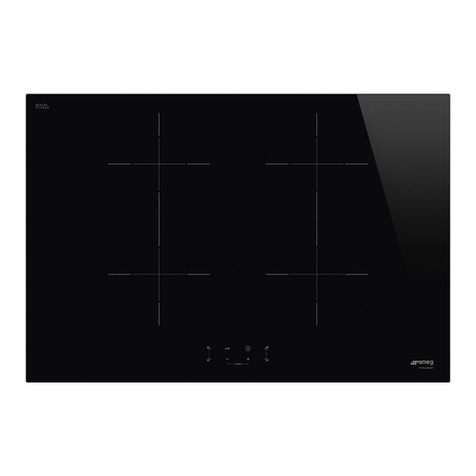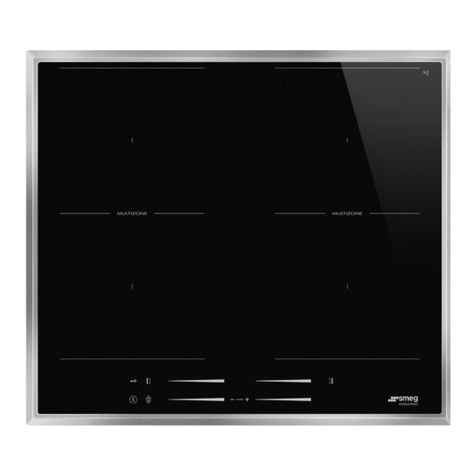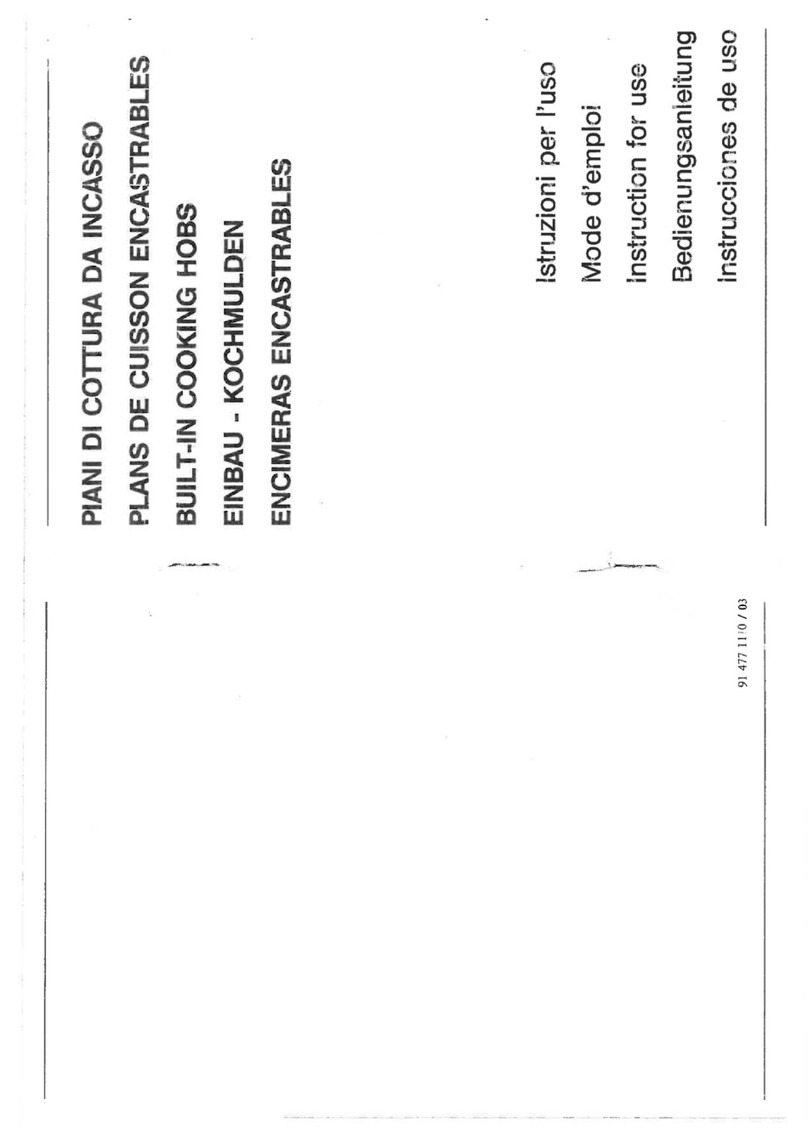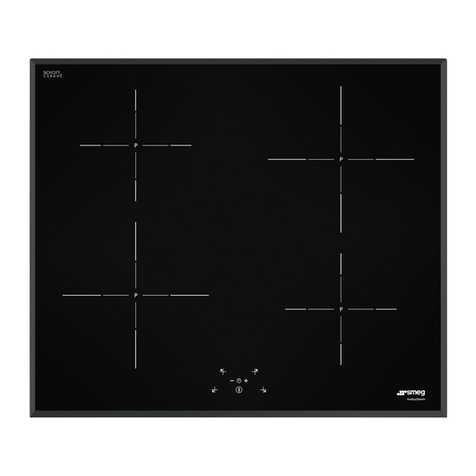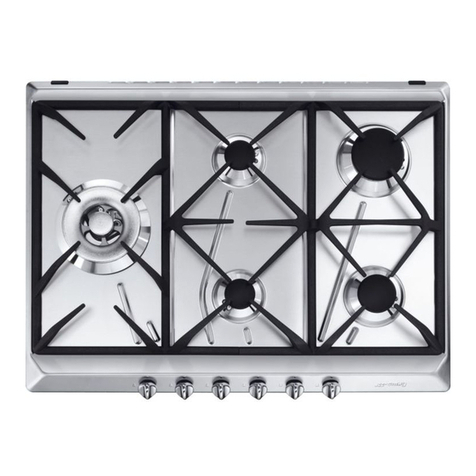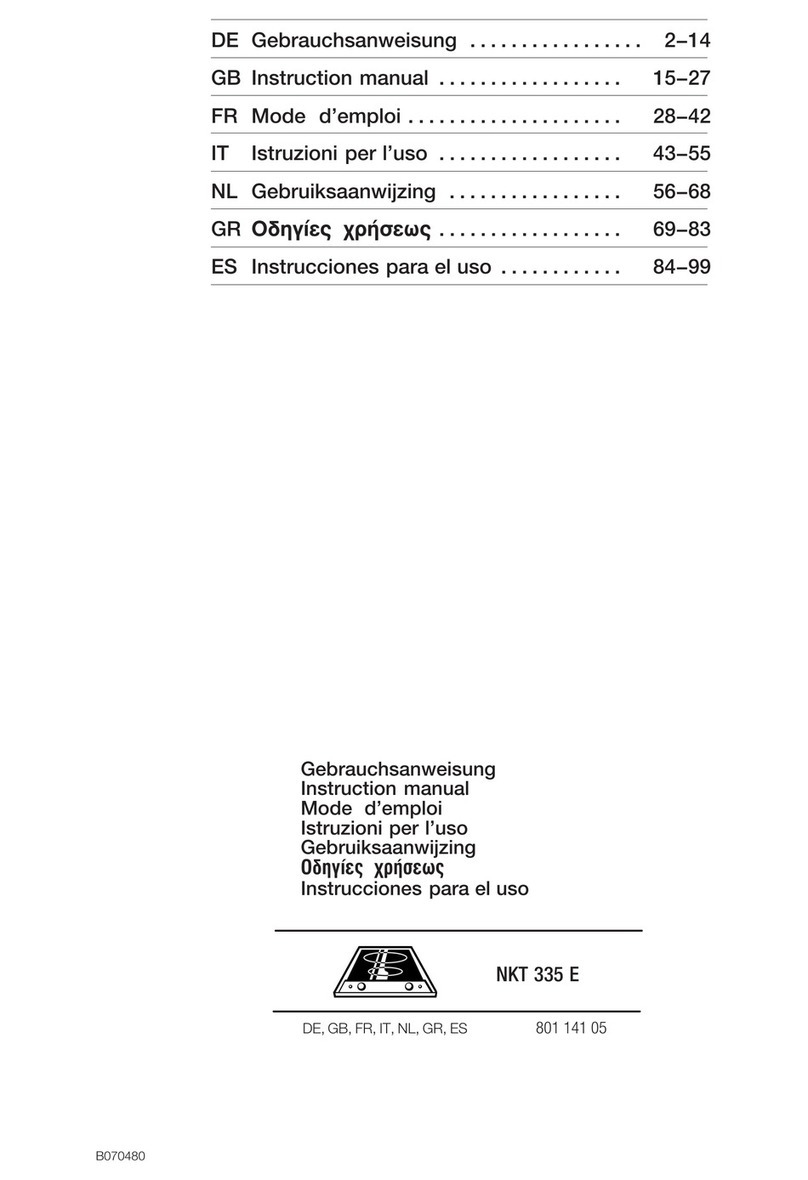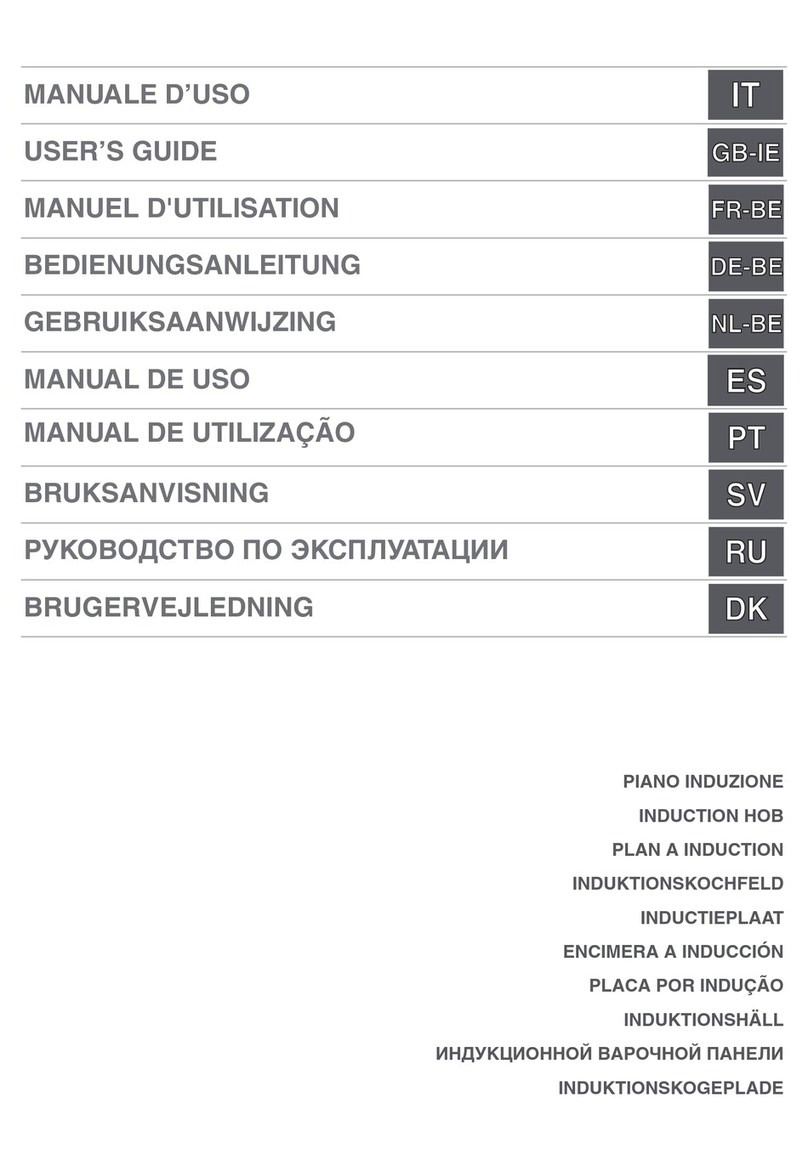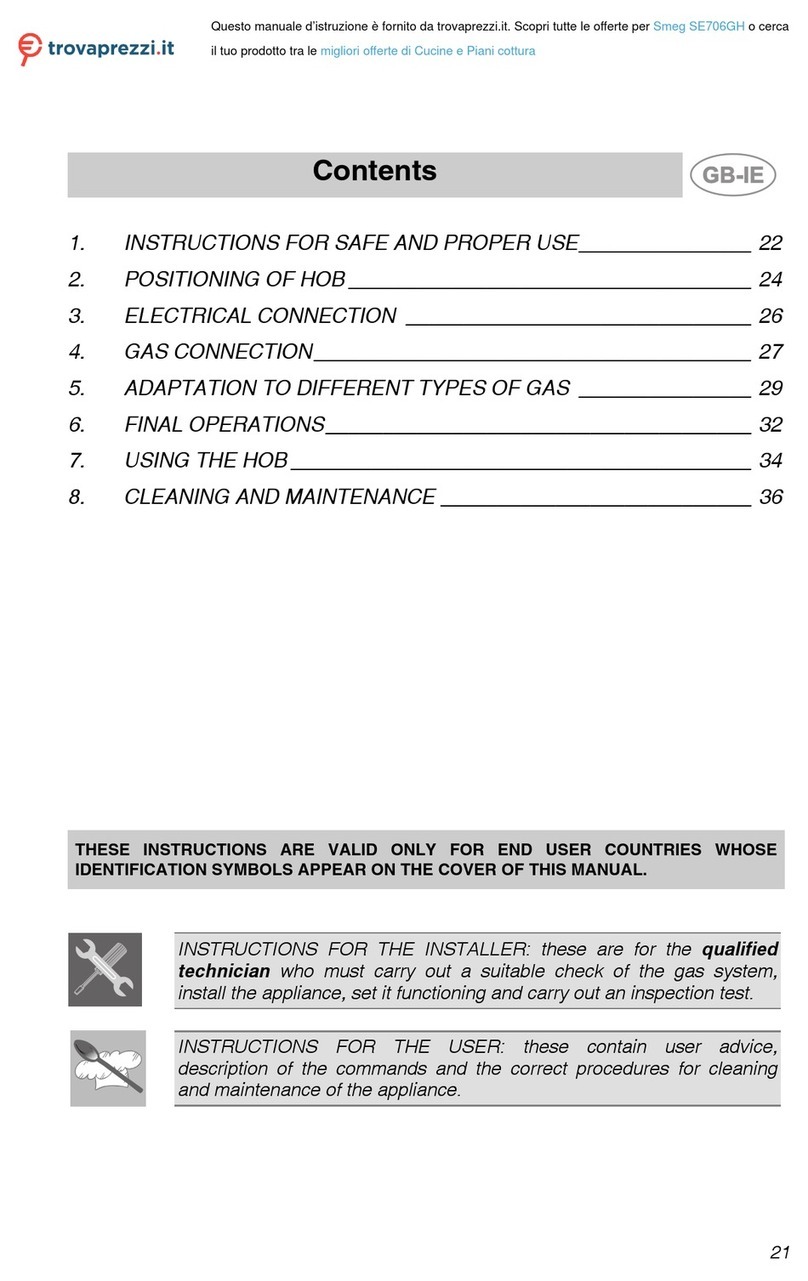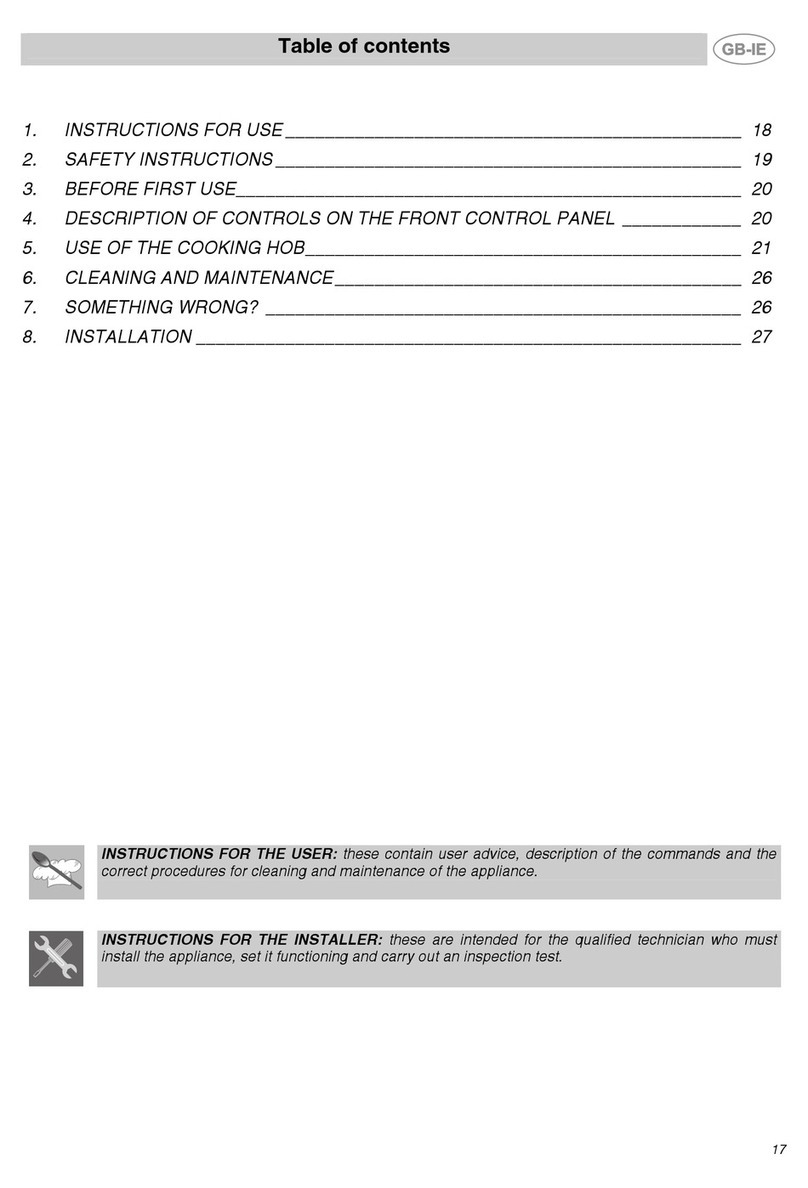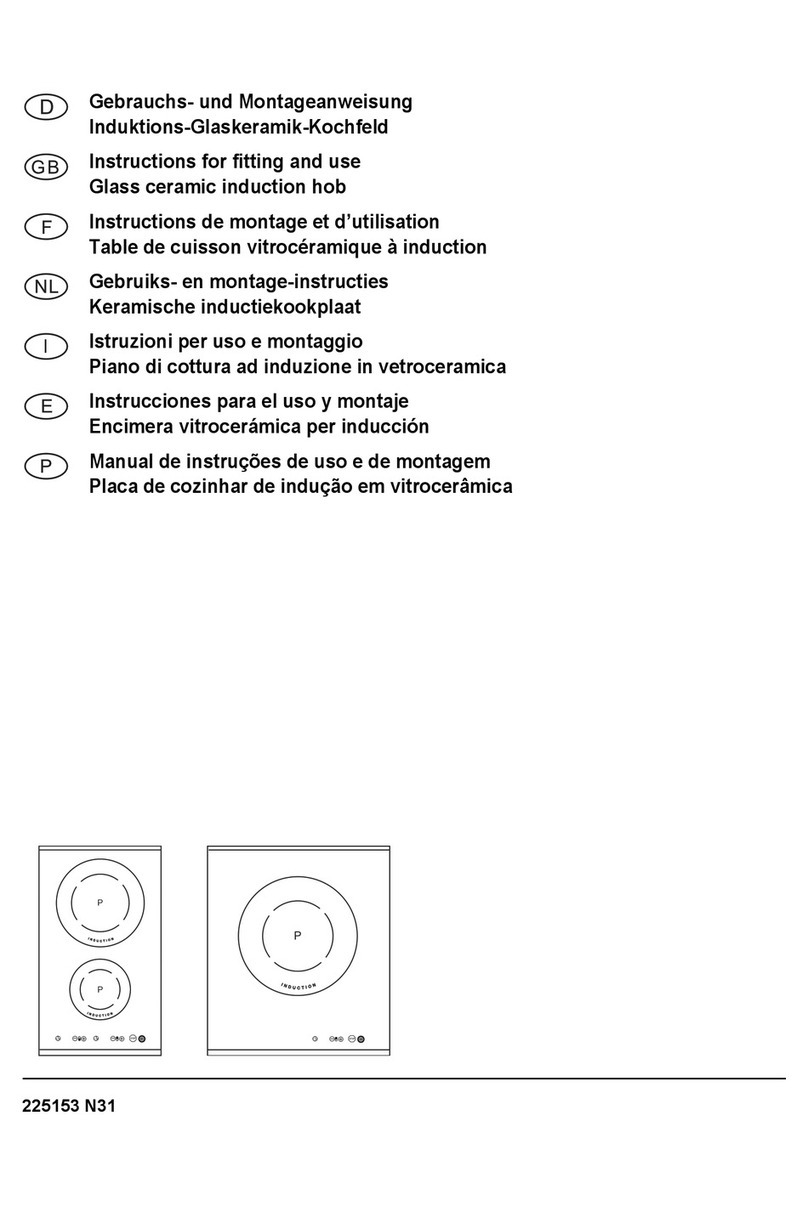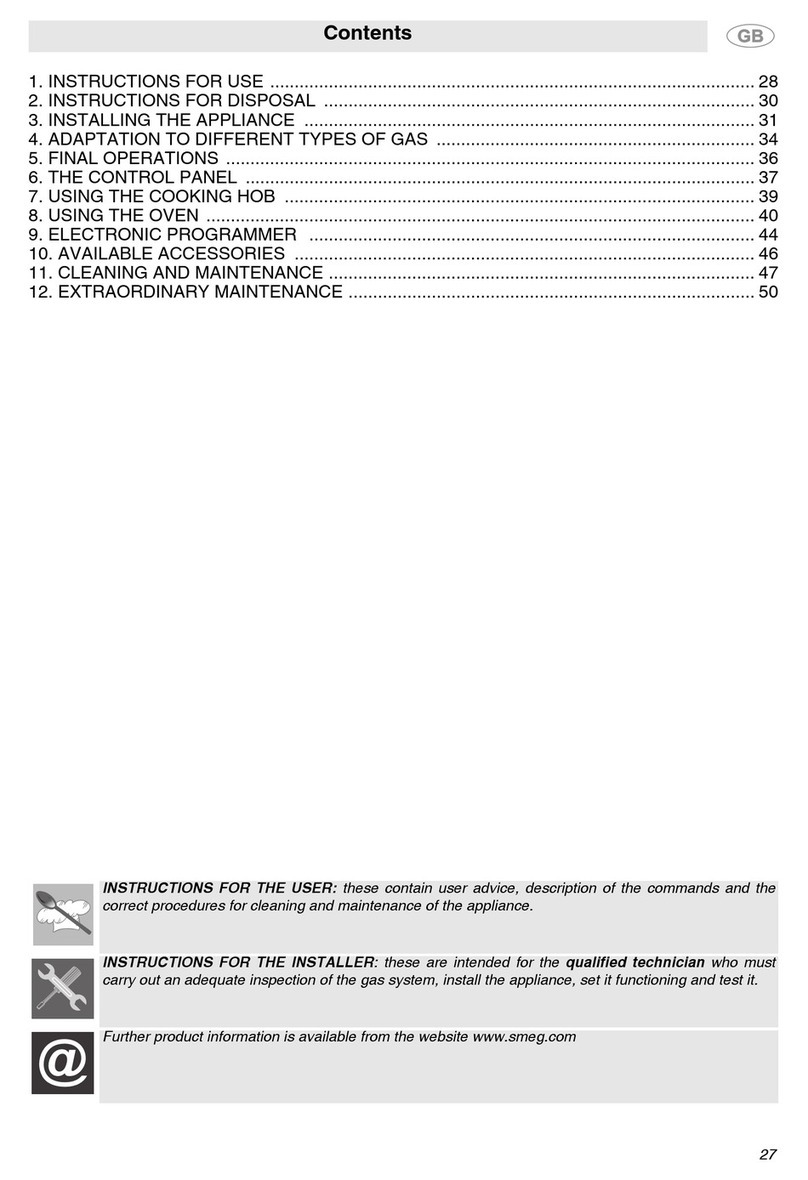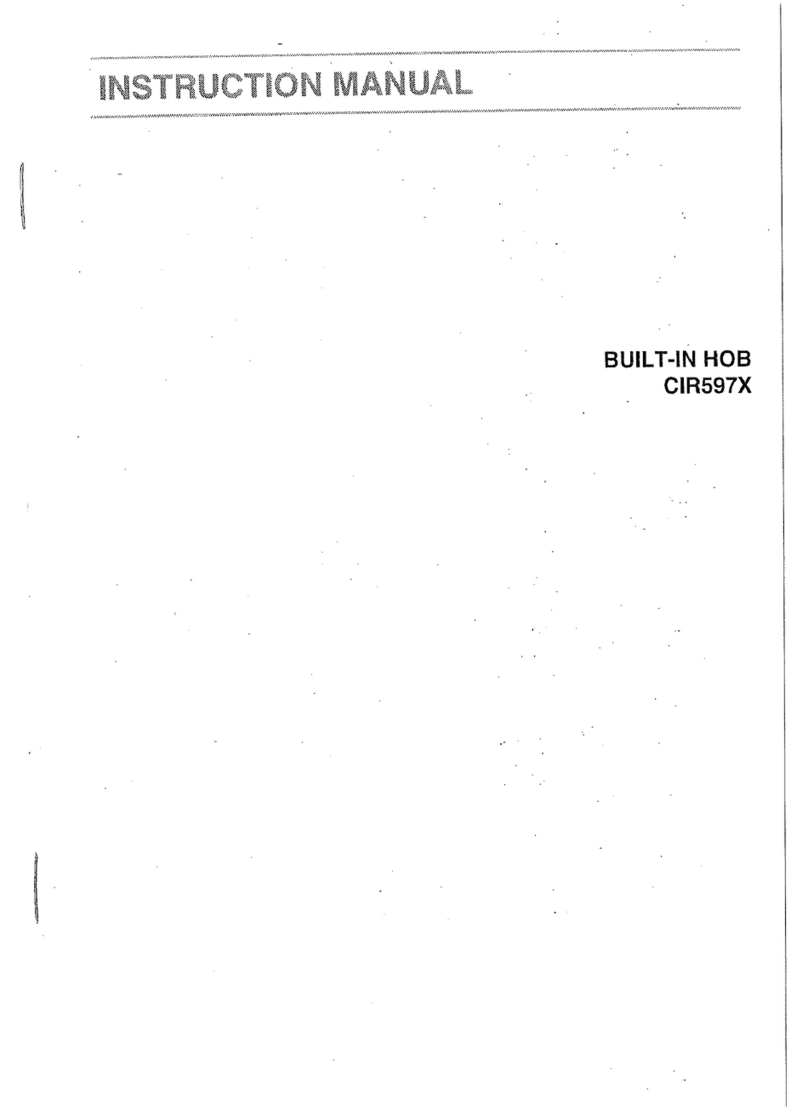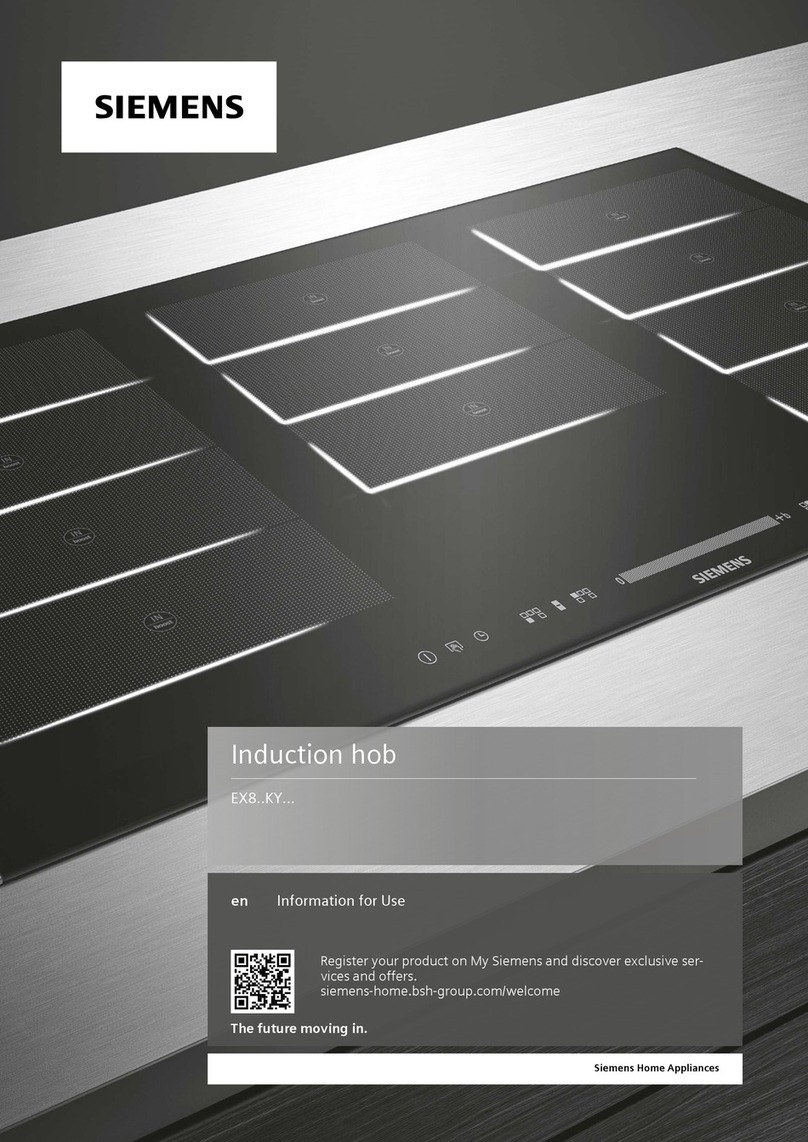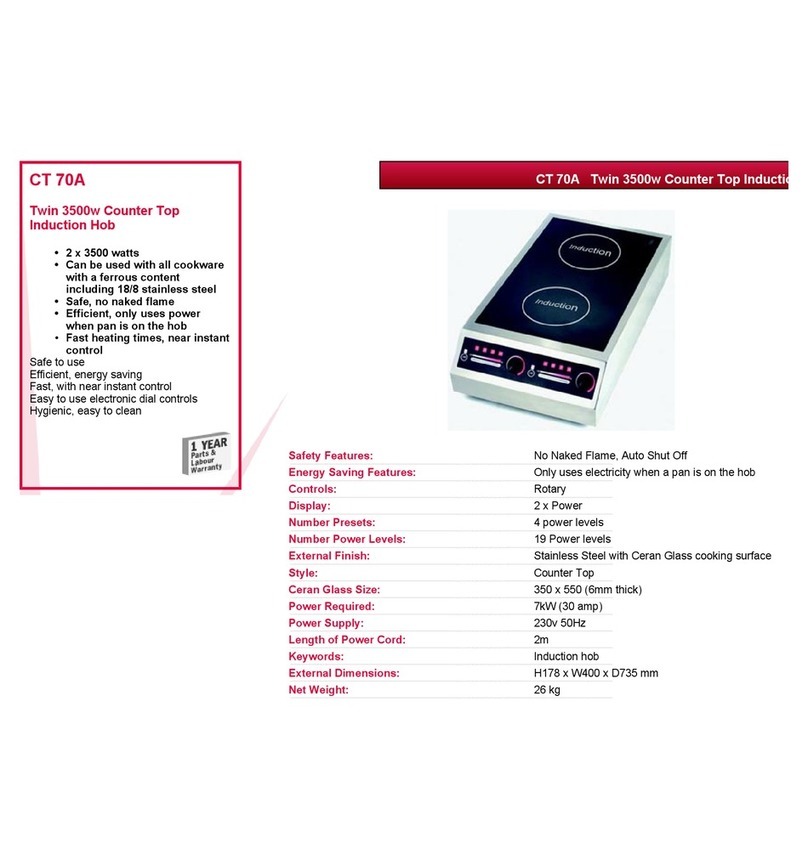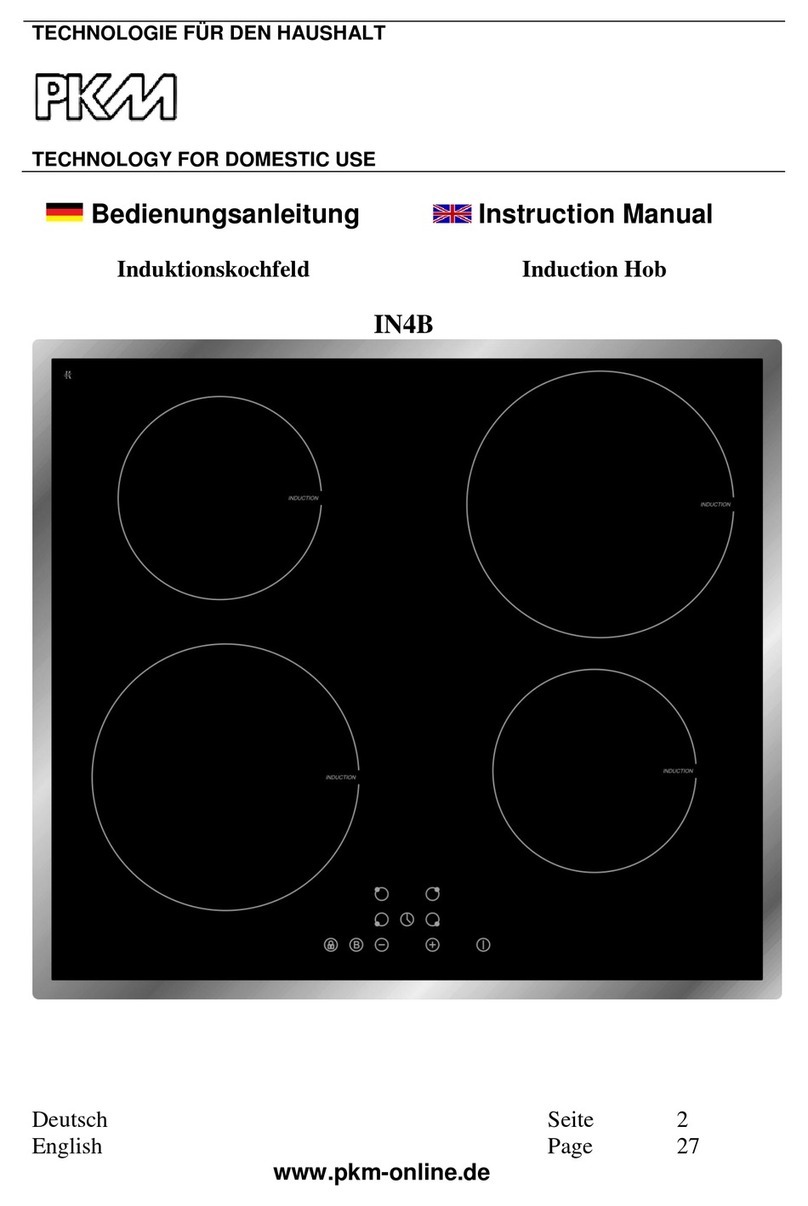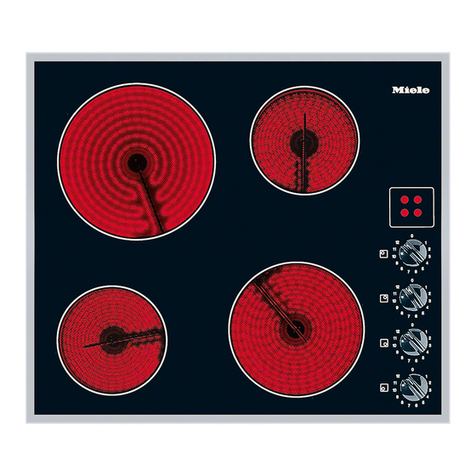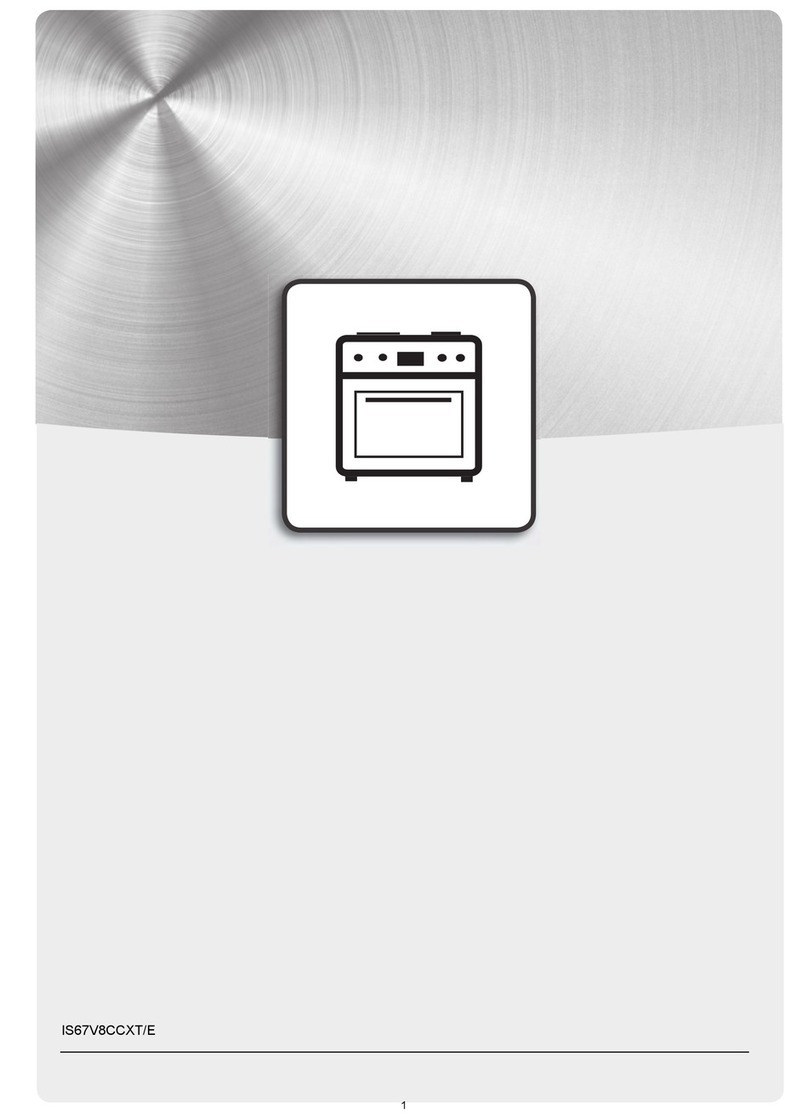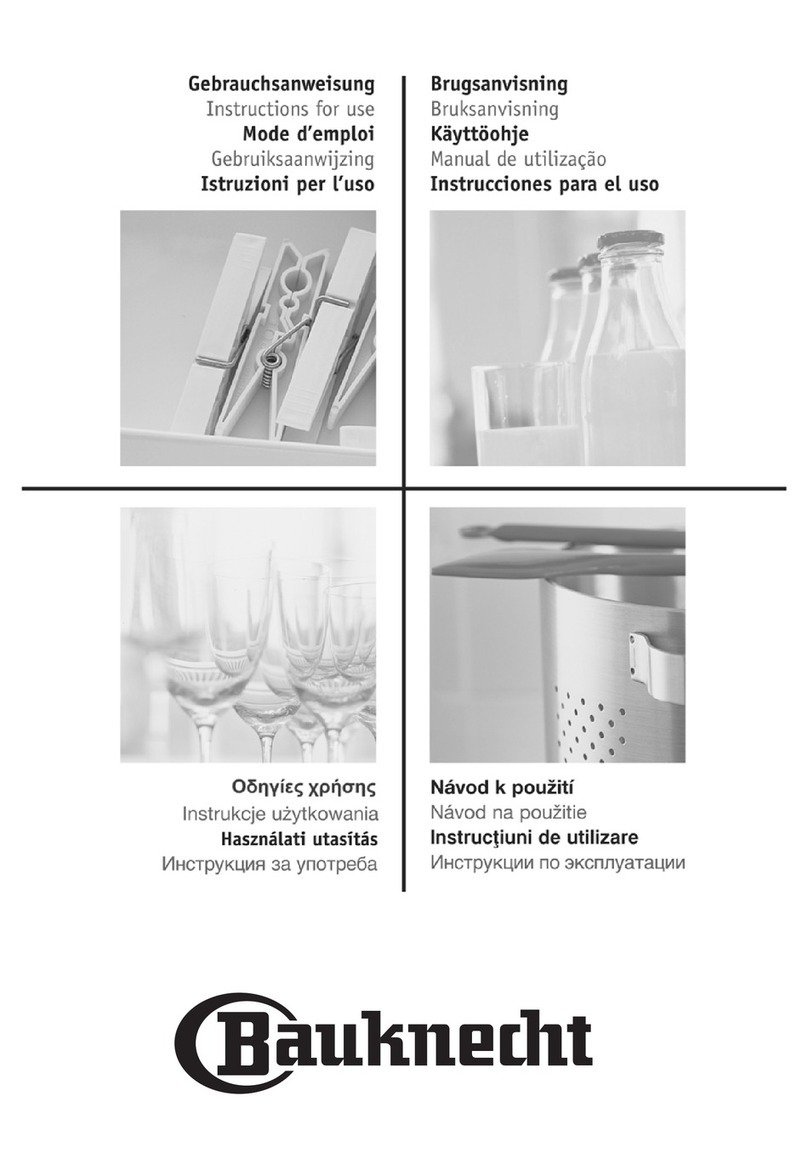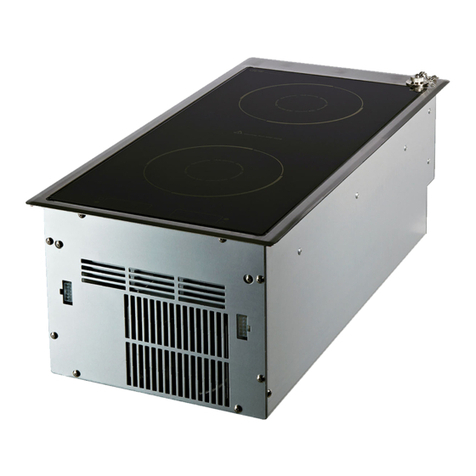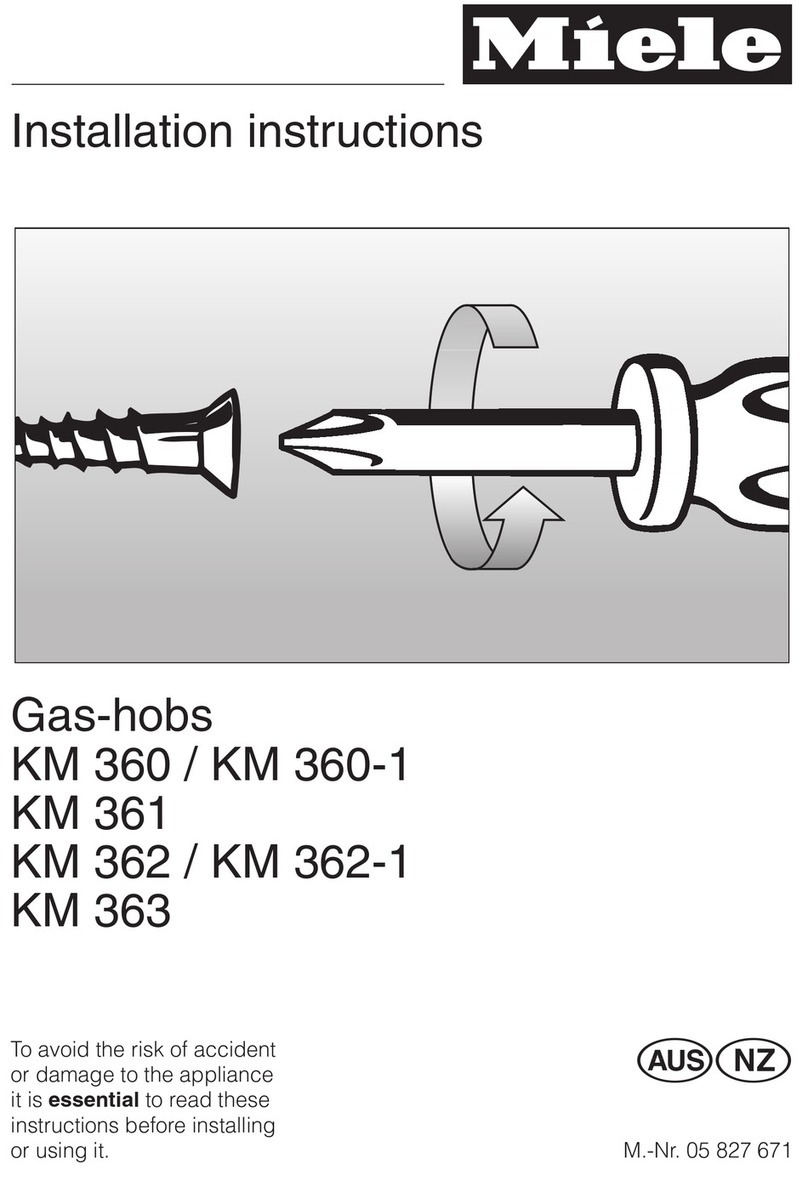
Instructions
7
• Do not use a steam cleaner to
clean the appliance.
• Do not use harsh abrasive
cleaners or sharp metal scrapers
to clean the oven glass door since
they can scratch the surface,
which may result in shattering of
the glass.
• Do not use cleaning products
containing chlorine, ammonia or
bleach on parts made of steel or
that have metallic surface finishes
(e.g. anodizing, nickel- or
chromium-plating).
• Do not use abrasive or corrosive
detergents (e.g. scouring
powders, stain removers and
metallic sponges) on glass parts.
• Do not wash removable parts such
as the hob pan support grids,
flame-spreader crowns and
burner caps in the dishwasher.
• Never use the oven door to lever
the appliance into place when
fitting.
• Avoid exerting too much pressure
on the oven door when open.
• Do not use the handle to lift or
move the appliance.
Installation
• THIS APPLIANCE MUST NOT BE
INSTALLED IN BOATS OR
CARAVANS.
• The appliance must not be
installed on a pedestal.
• Position the appliance into the
cabinet cut-out with the help of a
second person.
• WARNING: In order to prevent
accidental tipping of the
appliance, the stabilising means
must be installed. Refer to
Instructions for installation.
• To avoid potential overheating, the
appliance must not be installed
behind a decorative door or a
panel.
• Have the gas connection
performed by authorised
technical personnel.
• Installation using a hose must be
carried out so that the length of
the hose does not exceed 2
metres when fully extended for
steel hoses and 1.5 metres for
rubber hoses.
• The hoses should not come into
contact with moving parts and
should not be crushed in any way.
• If this appliance is installed on a
base, measures must be taken to
prevent the appliance from
slipping from the base.
• If the electrical supply is restricted,
means of all-pole disconnection
must be accessible and
incorporated in the fixed wiring in
accordance with the wiring rules.


